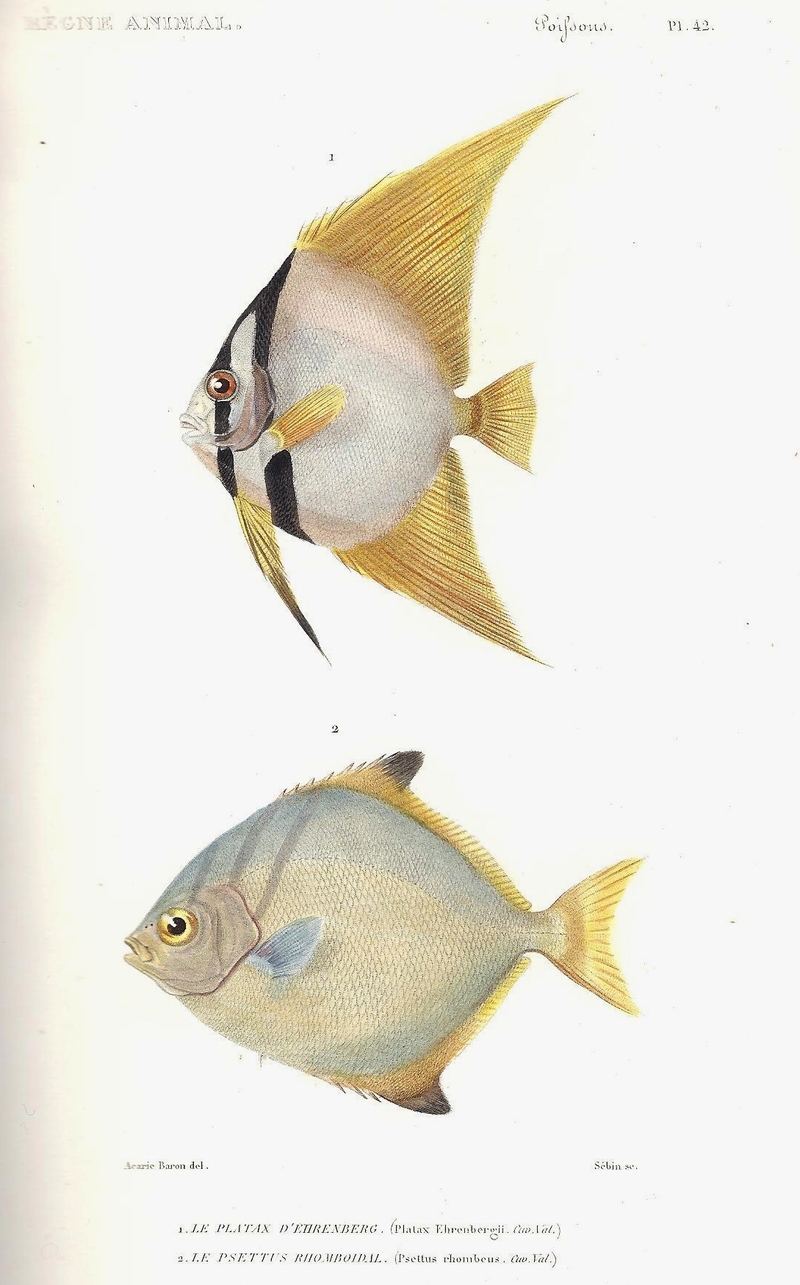|
| 질의: the snout | 결과: 338번째/526 | |
Platax ehrenbergii = Platax orbicularis (orbicular batfish), Psettus rhombeus = Monodactylus argenteus (silver moonyfish)
| 제목: | Platax ehrenbergii = Platax orbicularis (orbicular batfish), Psettus rhombeus = Monodactylus argenteus (silver moonyfish)
| | 올린이: | Wiki Photos (---@---.---)
| |

| 해상도: 1089x1749
파일크기: 515802 Bytes
촬영일: 2013:05:07 10:02:20
등록시간: 2024:02:26 17:05:36
|
Acarie Baron del.
1. LE PLATAX D'EHRENBERG. (Platax Ehrenbergii Cuv. Val.)
2. LE PSETTUS RHOMBOIDAL. (Psettus rhombeus Cuv. Val.)
Français : Planche N°42 du livre "Le règne animal distribué d'après son organisation" par Georges Cuvier (Tome 8), seconde édition de 1828, représentant :
-en haut : Platax ehrenbergii
-en bas : Psettus rhombeus
Source: https://commons.wikimedia.org/wiki/File:Cuvier-42-Platax-Psettus.jpg
1. Platax Ehrenbergii = Platax orbicularis (orbicular batfish)
Platax orbicularis - orbicular batfish, cooper batfish, circular batfish, orbiculate batfish, round batfish, narrow-banded batfish, orbic batfish
The orbicular batfish (Platax orbicularis) is a species of marine ray-finned fish belonging to the family Ephippidae. It is found in the Indo-Pacific, but has been recorded outside its native range in the western Atlantic Ocean. Adult orbicular batfishes have round bodies, highly compressed and deep. Larger adults have an indented snout with a bony intraorbital protuberance. They have bands of thin, flattened, tricuspid teeth on both jaws. The dorsal and anal fins are yellowish with black margins, and there may be small black spots on the flanks.
Order: Moroniformes > Family: Ephippidae > Genus: Platax > Species: Platax orbicularis
2. Psettus rhombeus = Monodactylus argenteus (silver moony)
Monodactylus argenteus - silver moonyfish, silver moony, butter bream, diamondfish
The silver moonyfish (Monodactylus argenteus), aka silver moony, butter bream, and diamondfish, is a species of fish in the family Monodactylidae. This fish is native to the western Pacific and Indian Oceans, including the Persian Gulf, Red Sea, and associated estuaries such as the Mekong Delta. The silver moonyfish is bright shiny silver with yellowish edges on its fins. The dorsal and anal fins have black tips. Juveniles display more yellow coloration and are distinguished by two vertical black bands. Its ability to survive in a wide range of salinities makes it a model organism for studying salinity tolerance.
Order: Perciformes > Family: Monodactylidae > Genus: Monodactylus > Species: Monodactylus argenteus |
^o^
동물그림창고 똑똑전화 누리집
^o^
|
|